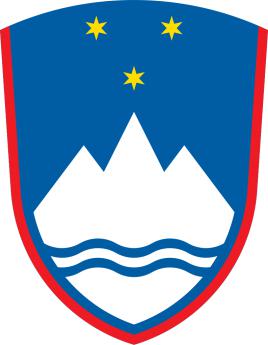

Slovenia (Slovenian: Slovenia) is a developed country in Europe, fully known as the Republic of Slovenia, it is a member of the European Union, a member of NATO, a member of the OECD, and a European Schengen state, in the first half of 2008, it became the rotating president of the European Union. Slovenia ranks first in GDP per capita among the countries in transition in Southeast Europe, and it is also a founding member of the world trade organization. The country is located at the southern foot of the Alps, bordering Italy in the west, Adriatic Sea in the southwest, surrounded by Croatia in the East and south, Hungary in the northeast and Austria in the north.
Slovenia was a member Republic of the former Yugoslavia before 1991. Independence on June 25, 1991. It joined the European Union on May 1, 2004, the exchange rate exchange mechanism on June 28, 2007, the euro area on January 1, 2007, and the European Schengen area on December 21,2007. On October 28, 2015, the 70th session of the United Nations General Assembly today reelected a member of the United Nations Human Rights Council, and Slovenia was successfully elected for a term from 2016 to 2018.
Slovenia is located at the junction of the four major geographical regions of Europe: the Alps, the Dinara mountains, the middle reaches of the Danube plain and the Mediterranean coast. It covers an area of 20273 km. Slovenian coast belongs to Mediterranean climate, and inland belongs to temperate continental climate, the average temperature is -2 °C in January and 21 °C in July.
Mineral resources are poor, mainly including mercury, coal, lead, zinc, etc. The forest and water resources are abundant, with a forest coverage rate of 49.7%, although the forest coverage rate of Slovenia ranks high in the EU, the proportion of wood and its derivatives converted into green energy is not high, which is 0.7 percentage points lower than the average level of the EU. In addition, there are 5593km2 grassland, 363km2 orchard and 216km2 vineyard in the country.
The average altitude of Slovenia is 557 meters, and the highest peak is Triglav with an altitude of 2864 meters. About half of Slovenia's area (10124 square kilometers) is covered by forests, as of 2014, Slovenia also ranked third among European countries in terms of national forest coverage, behind Finland and Sweden. Some virgin forests still exist in the country.
As a highly developed country, Slovenia has a very good industrial and technological foundation. In 2000, the industrial GDP accounted for 37.5% of the GDP, and the employed population was 337000, accounting for 37.8% of the total employed population. It mainly includes ferrous metallurgy, papermaking, pharmaceutical, furniture manufacturing, shoe making, food processing with a good industrial and technological foundation. The industry is relatively developed, and the electric power industry is advanced, there are also ferrous metallurgy, papermaking, furniture manufacturing, shoemaking, textile, electronics, machinery, food and other industrial sectors. Agricultural products are mainly potatoes, grains and fruits, forestry and animal husbandry are also important, mainly raising cattle, pigs, horses, sheep, poultry and other livestock.
